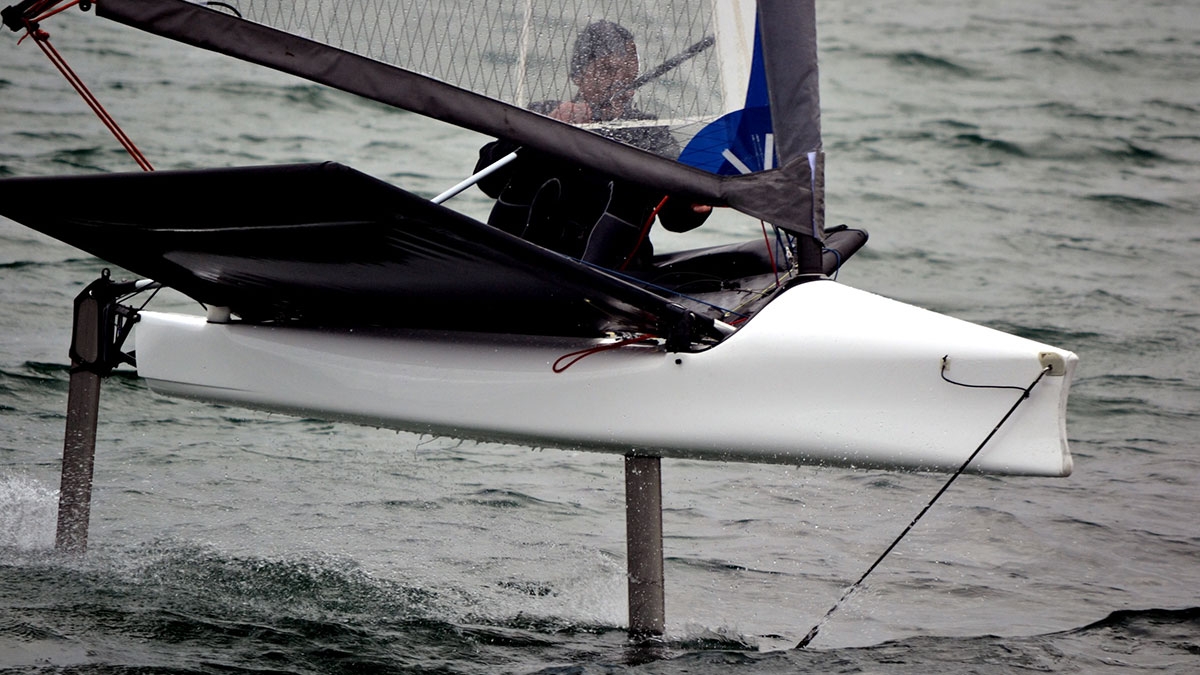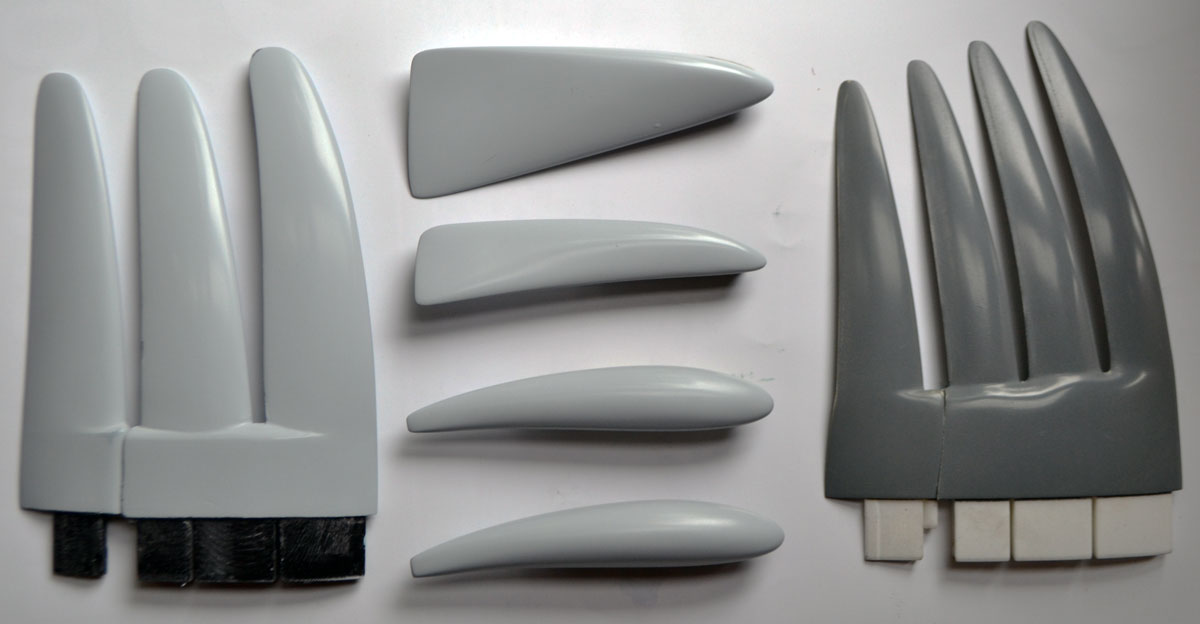
DAY ONE
June 10, 2015 - The launch
Not really day one, the idea was already forming before the Mach2 was started in 2008. With the Mach2 more successful than I imagined we focused on that and the WASZP project languished for two more years. (Probably just having too much fun sailing and developing to think about it)
But it was day one of on water testing.
The earliest document I can find is dated 24 Feb 2011. It spells out the WASZP close to what we built. The first CAD file is dated 16 March 2011 - that makes it 1547 days from commencing design to launch, probably representing 11000 hours of work.
What was it like? It was not right…. I should have been prepared for this, but the Mach2 worked like a dream from day one so I was over confident, forgetting that this had so many new parameters. I struggled to get it foiling and when I finally did, it was unstable. I went in exhausted, having let computer/workshop time take over from sailing/gym time for the past 4 months.
We made some adjustments – mainly pushing the wishboom higher up the mast to get a better balance of leech tension, and sent the younger, fitter (and lighter) Kohei out. He foiled around quite well – the picture on Sailing Anarchy a few days later was from that session, as is the video on the front page.
But there was work to do. The eagle wing tips were raw finish from the 3D printer and needed painting. We also decided to go with a more conventional end plate tip on the rudder like we use on the Mach2 high lift foil.
We need wind now.

DAY TWO
June 14, 2015
With no wind for 3 days we (Gus and I) tried to get out for a dawn sail to catch the northerly. It was gone, so we drifted around in the 10° morning chill. But the first race of WASZP against Moth was won easily by the WASZP. The hull is very slippery and the stayless rig means you can keep flow over the sail at much deeper angles. Did not expect this with the extra area of the alloy foils… My hope in the WASZP regatta guidelines is to have a non-foiling mode for light wind racing – either the horizontals are removed and replaced with a fairing bulb, and you will have fastest 2-4 knot boat in the general racing scene.
Then to shore as the wind completely clapped out.
DAY THREE
June 17, 2015
Port Phillip Bay, particularly Black Rock, is not the best place to test in winter. But I have been doing it here for 30 years now, so know the drill. Too much wind, not enough. And it is cold. Cold is fine for training, you get warm. But testing takes it out of you and the cold adds another dimension.
Day three’s session started just before sunset and was over almost before it started with one of our 3D printed wing blocks breaking. I am ashamed to say I gave an earful to a keen photographer who was there to support us. Sometimes you just want to be invisible.
Time to print stronger blocks and encase in carbon to be sure this time. Maybe a better 3D printer is called for.
DAY FOUR
The first day of some decent wind, Kohei was out and we had some good runs together. Upwind was better than downwind, and as Kohei says – it was not slow. But still it did not feel right, particularly when the wind dropped.
DAY FIVE
June 21, 2015
Wind is good, but after ripping out the clew of the sail rigging up I think we are done for the day, but Lindsay (Irwin Sails) was on the case and came down with repair tools. So I got to sail against Kohei on his Mach2 again. The wind was lighter this time and I struggled to foil consistently with Kohei zipping around. Swap with Kohei but the wind is gone. Now I am starting to seriously lose confidence. If this does not work I have wasted a lot of time, opportunity and money. Not the lose-the-lot that would have been the case if the Mach2 had failed, but a serious hit at a point in life that you don’t want to be starting something new just to survive. I have not felt so low for a long time.
We design a new set of ‘Eagle’ Wing Tips, this time with only 3 feathers so we could make them stiffer. We also realize that the angle of attack was too low on the feathers – a mistake I probably would not have made if we had to go direct to moulds like we did with the Mach2. The 3D printer has taken focus out of the initial design process allowing you to just build and test.
But it is starting to become obvious that while the eagle tips might be more efficient, they need care when launching. This is really brought home when on the beach the mainsheet is caught between the fingers. I pull on it and do damage. OK, the 3D print is not as strong as the production injection moulded ones will be, but it is easy to see the potential for damage.
So I decide that night that we need to go much more conservative with the tips, even the end plate tips on the rudder have lost a bit off the tip misjudging the ramp. At 10:30 that night I design a new bulb like tip, by morning a pair is printed and by lunchtime painted.
But the wind does not show. 4 days we wait. Sat 26 is the last day before I have to pull it apart to take to bits of it to TFW in Italy.
DAY SIX – THE WASZP BECOMES SELF AWARE
June 27, 2015
It is the last chance. To go to Italy as first up speaker without ever having foiled the WASZP properly is too much to bear. I am desperate and rally Gus and James to come sailing at dawn - the best chance for wind. Both are late and for the first time I am alone just tinkering with the boat. I make some simple changes to the way the sail is rigged and the direction of pull on the bridle – suddenly the sail comes to life. You need those quiet times.
There is only one chance now to test, so I have to choose between the eagle tips and the more conventional tips, now mounted on much longer sections to offset the loss from the eagle tips. I have to go with conventional. James turns up, but too sick to sail. He gets camera duty.
SELF AWARE?
Maybe that was literary license, but suddenly it became fun, really fun. The boat just eases out of the water, every time. I do a foiling tack – foiling gybes (but keep dropping it after because I keep taking the tiller backwards, too ingrained from sailing the Mach2). And it feels quick. Easy. Fun. Tacking angles great. Still some instability issues to sort in waves downwind – that won’t take long. And recovery from nosedives – just as I hoped – it picks itself straight up again. Never felt likely to cartwheel!!
I can go to Italy now.
Andrew McDougall
30/6/15






 AUS / NZReseller
AUS / NZReseller USAReseller
USAReseller UKReseller
UKReseller ITReseller
ITReseller Global Ordering and Delivery
Global Ordering and Delivery